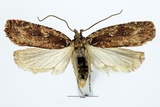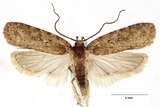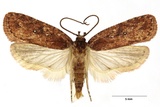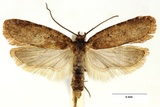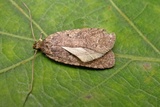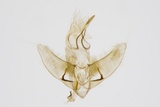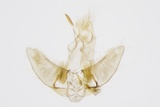Agonopterix ciliella (Stainton, 1849) Species
Last modified: Dec. 5, 2025, 7:18 p.m.
A rather rare species in many areas of Belgium, less observed in the south.
Details
- Classification
- Family: Depressariidae > Subfamily: Depressariinae > Genus: Agonopterix > Species: Agonopterix ciliella
- Vernacular names
- Bonte kaartmot (NL)
- First mention in Belgium
- De Crombrugghe G. 1905. Note sur quelques Microlépidoptères de la faune belge. — Annales de la Société Entomologique de Belgique 49: 100–107. On page 106 (as Depressaria ciliella Stt.). view page
- Status
-
Native
Distribution
Imago
Can be separated from Agonopteryx heracliana by its greater size and by the presence of 5 faint grey lines in the hindwing cilia.
Caterpillar
Green, with dorsal and dorsolateral lines darker green; head capsule dark brown to black; prothoracic plate greenish brown, black laterally; last abdominal segment green with some blackish dots; pinacula black.
Bionomics
The caterpillar sometimes feeds on the flowers or seed of the foodplant, but lives more commonly on the leaves from a tube which it constructs by spinning a leaflet downwards; several such tubes are constructed during the entire development. June–September.
Pupation on the upper layers of the soil or amongst leaf litter; July–September.
The species hibernate in the adult stage. The adults are active at night and sometimes come to light; after hibernation, they easily come to sugar.
Flight periods
One generation a year from July and after hibernation till May.
Observed on
- Host plant (species):
- Angelica sylvestris, Heracleum sphondylium, Peucedanum palustre and Daucus carota
- Host plant (genera):
- Pastinaca, Anthriscus, Selinum, Silaum, Chaerophyllum and Meum
Oligophagous on many species of Apiaceae, like Angelica sylvestris, Daucus carota, Heracleum sphondylium, Selinum carvifolia, Silaum silaus, Chaerophyllum, Pastinaca sativa, Anthriscus, Peucedanum palustre or Meum.
Habitat
Very different kinds of habitat as long as one of the larval foodplants is growing there.

